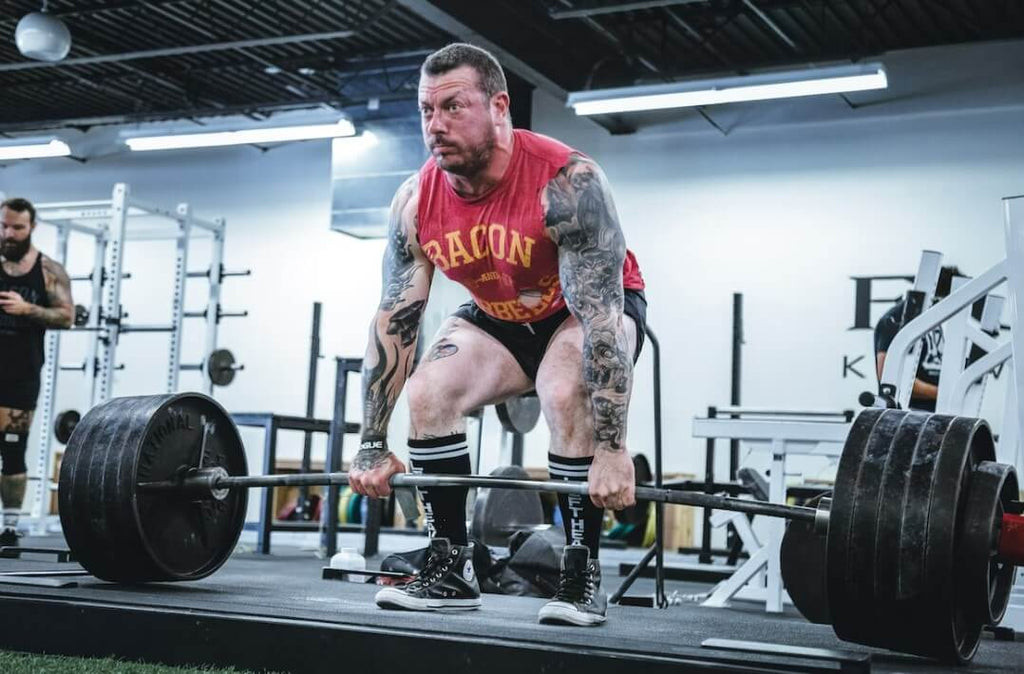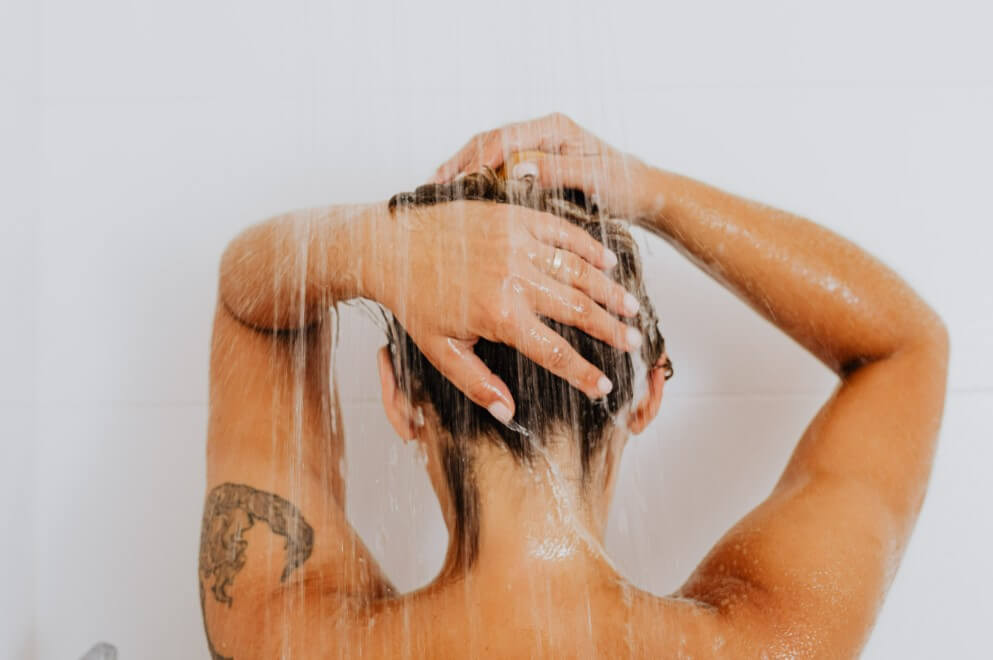Getting a new tattoo is exciting, but if you’re into fitness, you’re probably wondering, Can You Still Workout After Getting A Tattoo? Yes, you can workout after getting a tattoo, but it’s crucial to approach it with caution and awareness. Tattooat.com is here to guide you through the process of maintaining your fitness routine while ensuring your new ink heals perfectly. This guide provides expert advice and helpful tips to help you protect your body art investment while staying active.
1. Why Should You Wait To Workout After Getting A Tattoo?
After a workout, there’s no better feeling. Exercise releases endorphins, dopamine, serotonin, and norepinephrine, creating euphoria & happiness. While we advocate for healthy bodies & minds, your body needs rest for the few days after a new tattoo. Here’s why:
- Prevent Infection Your skin is an open wound, making it vulnerable to infection. Sweat and dirty gym equipment can introduce bacteria, hindering the healing process.
- Prevent Irritation Exercise causes your skin to rub against clothing, leading to friction, irritation, redness, and itching, potentially causing fading.
- Prevent Stretching & Wrinkling Skin stretches and wrinkles with movement, which makes it difficult for skin to repair itself. Avoid exercises near joints for at least 5-7 days.
- Prevent Bleeding Bleeding is normal in the first 48-72 hours, working out elevates blood pressure, causing more bleeding which may result in infections or ink damage.
 Weightlifter with a fresh bicep tattoo, showcasing the importance of avoiding exercises that stretch the tattooed area
Weightlifter with a fresh bicep tattoo, showcasing the importance of avoiding exercises that stretch the tattooed area
2. How To Workout After A Tattoo
To ensure a smooth healing process while maintaining your fitness, here’s a guide for working out after getting inked.
2.1. Avoid High-Intensity Workouts
Avoid high-intensity workouts for at least a week after getting your tattoo to allow your skin time to heal. It will take several weeks & months until all three layers of skin are fully repaired. According to a study by Portland State University’s Art Department in July 2023, gradual reintroduction to exercise is key.
2.2. Stay Out Of The Pool
Water, besides showering & cleaning your tattoo, poses a huge risk of infection. Stay out of lakes, oceans, saunas, and hot tubs for at least a month. No swimming or pool workouts, this includes cold water too. Wait a few weeks until your next ice bath.
2.3. Protect Your Skin From The Sun
Stay out of the sun for at least 4 weeks too. Prolonged UV exposure and un-sanitized water will cause infection, cracking, and fading. When exercising outdoors, cover your new design with loose-fitting clothing or apply sunscreen to protect it.
2.4. Wear Loose-Fitting Clothing
For the next 2 weeks, swap your wardrobe out for clothes that are loose-fitting. Tight clothing increases friction and traps heat between the ink and your clothes, which will irritate your skin and permanently damage the design. According to Inked Magazine, breathable fabrics are ideal.
2.5. Wipe Down The Equipment
Wipe down any equipment before you use it with a sanitary napkin or paper towel & spray bottle, whichever your gym offers. This includes barbells, dumbbells, treadmills, rubber mats, and anything else you may touch with your hands. Avoid bare skin contact between your bare skin tattoo and the gym equipment, even after sanitizing.
2.6. Clean & Moisturize Immediately Afterwards
 Woman taking a cool shower after workout, highlighting the importance of tattoo aftercare
Woman taking a cool shower after workout, highlighting the importance of tattoo aftercare
To clear the bacteria from your skin and reduce the chance of infection, clean & moisturize your tattoo as soon as you’re done working out. Take a cool shower to clean the area, wash your hands thoroughly with soap before touching the tattoo, then gently scrub the area with an antibacterial, liquid soap. Apply your tattoo moisturizer or unscented body lotion to prevent your skin from drying out and cracking.
3. When To Workout After A Tattoo
Understanding the healing timeline is essential to planning your return to the gym. Here’s a breakdown of what to expect:
3.1. The Day After
Your first workout should be an easy one. Go for a long walk, do a low-intensity bodyweight workout in your home, or go through a beginner yoga flow. You can still burn 200-300+ calories with each of these without breaking much of a sweat. At-home workouts are perfect because you can wear whatever you want, which you may not be able to do at your gym or outdoors.
3.2. After 2-3 Days
After the first 48-72 hours, most people can resume their normal fitness routines at a lower intensity. Easy back into it at 70-80% for the next 3-4 days.
3.3. After 1 Week
Around the 6-7 day mark, your skin should have healed enough to resume full intensity training. Push your body to the limit, as long as you continue to wear loose-fitting clothes, sanitize regularly, and clean & moisturize immediately afterwards.
3.4. After 4 Weeks
Around the 4 week mark, assuming you haven’t had any infections or delays in your healing process, you can get back in the water. For everyone else, you can show off your summer body at the pool, in the sauna, and ice baths too.
4. Understanding The Tattoo Healing Process
The tattoo healing process is a critical factor in determining when and how you can resume your workouts. The healing process can be broken down into several stages:
| Stage | Timeframe | Characteristics | Workout Considerations |
|---|---|---|---|
| Initial Days | Days 1-3 | Redness, swelling, soreness, and potential oozing. | Avoid all workouts to prevent infection and irritation. |
| Peeling | Days 4-14 | Itching and peeling of the outer layer of skin. | Light activities only, avoid stretching the tattooed area. |
| Healing | Weeks 3-4 | The tattoo appears fully healed, but the skin is still sensitive. | Gradual return to normal workouts, continue to protect the tattoo. |
| Long-Term | Months 2-6 | Complete healing, with the skin returning to its normal texture. | No restrictions, but continue to moisturize and protect from the sun. |
5. Choosing The Right Type Of Exercise
Selecting the appropriate type of exercise is crucial during the healing phase. Here’s a breakdown of suitable and unsuitable activities:
| Exercise Type | Suitability | Considerations |
|---|---|---|
| Walking | Suitable | Low impact, minimal stretching. |
| Yoga | Conditional | Avoid poses that stretch the tattooed area. |
| Weightlifting | Conditional | Start with lighter weights and avoid exercises that directly stress the tattooed area. |
| Swimming | Unsuitable | High risk of infection due to prolonged water exposure. |
| High-Intensity | Unsuitable | Excessive sweating and friction can irritate the tattoo. |
6. Location Of The Tattoo Matters
The placement of your tattoo plays a significant role in how soon you can return to specific exercises. Different body parts experience varying degrees of movement and friction, which can impact healing. Here’s a guide based on tattoo location:
6.1. Upper Body Tattoos (Arms, Shoulders, Back)
These areas are prone to stretching and friction during many upper body exercises. Avoid exercises like:
- Bench press
- Pull-ups
- Bicep curls
- Shoulder presses
Instead, focus on lower body workouts or light cardio that doesn’t strain the upper body.
6.2. Lower Body Tattoos (Legs, Calves, Ankles)
Lower body tattoos can be affected by exercises that involve repetitive leg movements or tight clothing. Avoid:
- Squats
- Deadlifts
- Running
- Cycling
Opt for upper body workouts or low-impact activities that don’t stress the legs.
6.3. Core Tattoos (Abdomen, Torso)
Core tattoos are particularly vulnerable due to the constant movement and friction from clothing. Avoid:
- Crunches
- Planks
- Twisting exercises
Consider light cardio or activities that don’t engage the core muscles excessively.
7. Recognizing Signs Of Infection
Monitoring your tattoo for signs of infection is crucial. If you notice any of the following symptoms, consult a healthcare professional immediately:
- Excessive redness or swelling
- Increased pain or tenderness
- Pus or discharge
- Fever or chills
- Unusual odor
Prompt action can prevent serious complications and ensure proper healing.
8. Tips For Minimizing Friction
Reducing friction is key to preventing irritation and promoting healing. Here are some practical tips:
- Wear loose-fitting clothing: Choose breathable fabrics that don’t cling to the skin.
- Use a barrier: Apply a thin layer of tattoo balm or petroleum jelly to create a protective barrier between the tattoo and clothing.
- Avoid tight waistbands: Opt for low-rise or adjustable waistbands to prevent rubbing.
- Choose appropriate footwear: Wear comfortable shoes and socks that don’t irritate ankle or foot tattoos.
9. What About Contact Sports?
If you participate in contact sports, take extra precautions to protect your new tattoo. According to the American Academy of Dermatology, direct contact and friction can significantly increase the risk of infection and damage.
- Consult your tattoo artist: Seek advice on the best way to protect your tattoo during sports activities.
- Use protective gear: Wear padding or bandages to shield the tattoo from impact.
- Delay participation: Consider waiting until the tattoo is fully healed before returning to contact sports.
10. Frequently Asked Questions (FAQ)
Here are some common questions about working out after getting a tattoo:
10.1. Can I do cardio after getting a tattoo?
Yes, but stick to low-impact options like walking or light cycling. Avoid high-intensity cardio that causes excessive sweating and friction.
10.2. How soon can I lift weights after a tattoo?
Wait at least a week and start with lighter weights. Avoid exercises that directly stress the tattooed area.
10.3. Can I do yoga after getting a tattoo?
Yes, but avoid poses that stretch the tattooed area. Opt for gentle, restorative yoga.
10.4. Is it okay to sweat on a new tattoo?
Sweating is unavoidable, but be sure to clean the tattoo immediately after your workout to prevent infection.
10.5. Can I use a sauna or steam room after getting a tattoo?
No, avoid saunas and steam rooms for at least a month due to the high risk of infection.
10.6. What type of clothing should I wear after getting a tattoo?
Wear loose-fitting, breathable clothing to minimize friction and irritation.
10.7. Can I apply sunscreen to a new tattoo?
Only after the tattoo is fully healed. Until then, protect it with clothing or shade.
10.8. How do I clean my tattoo after a workout?
Gently wash the area with antibacterial soap and water, then pat it dry with a clean towel.
10.9. Can I use petroleum jelly on my tattoo before working out?
Yes, a thin layer of petroleum jelly can provide a protective barrier against friction.
10.10. What should I do if my tattoo gets infected?
Consult a healthcare professional immediately for treatment and advice.
Tattoos look great, but they look even better on hard-earned physiques. So while it’s important to train hard, your body deserves a few days off to recover. Your skin will begin to heal and your muscles will be well-rested once you’re ready to get back in the gym. As long as you follow the basic guidelines for clothing, sanitizing, cleaning, and moisturizing, your fitness regimen won’t be affected too much.
Address: 1825 SW Broadway, Portland, OR 97201, United States.
Phone: +1 (503) 725-3000.
Website: tattooat.com.
Ready to explore the world of tattoos? Visit tattooat.com for inspiration, artist connections, and expert advice on tattoo aftercare. Find your next design and the perfect artist today!